A complex case review
Cleveland Clinic is a non-profit academic medical center. Advertising on our site helps support our mission. We do not endorse non-Cleveland Clinic products or services. Policy
A 25-year-old female was referred to Cleveland Clinic’s Center for Hip Preservation in early 2019 for right hip pain. Two years earlier, the patient was in a horseback riding accident and sustained a femoral neck fracture. She was treated at another hospital with a closed reduction and placement of cannulated screws (Figure 1). The pain had gradually worsened since then and was exacerbated by a range of daily living activities, including managing stairs, prolonged sitting and walking. She was unable to return to more intense recreational and sporting activities including riding.

Figure 1. Anteroposterior view of the right hip (A) and anteroposterior pelvis view (B), demonstrating avascular necrosis of the femoral head after cannulated screw fixation for femoral neck fracture 2 years prior.
The patient’s right leg measured approximately 2 cm shorter than her left leg. Radiographic images of the right hip demonstrated avascular necrosis (AVN), also referred to as osteonecrosis, of the femoral head with intact cannulated screws. There was mild flattening of the lateral third of the femoral head in the weight-bearing zone.
Avascular necrosis is a condition caused by a lack of blood supply to the bone tissue. In this case, the patient’s fractured hip was the likely trauma-related etiology for her AVN. The spectrum of nonsurgical and surgical treatment options was discussed, including femoral head osteochondral allografting, osteotomy, and total hip replacement. The severity of her intraarticular pathology necessitated an open approach to reconstruct the focal femoral head cartilage if an attempt at hip preservation was chosen.
Due to the patient’s young age and high activity level, and after further discussion with the patient and a review of alternative interventions, including observation (with injection therapy and activity modification), we decided on the following plan: right hip open surgical dislocation with focal cartilage repair and osteochondroplasty and removal of any obstructing cannulated screws.
A standard Gibson approach was utilized via a laterally based skin incision. A trochanteric flip osteotomy was performed by a standard surgical dislocation approach to protect the residual femoral head blood supply. A complete capsular exposure was performed, including access anteriorly, superiorly, and posteriorly. A Z-shaped capsulotomy was carried out and the flaps were tagged. Anterior and superior limbs were made in the capsulotomy. Distally, the capsulotomy was extended to the level of the neck. The range of motion to impingement and points of femoroacetabular conflict were again checked before dislocation with the arthrotomy opened. The hip was dislocated for exposure (Figure 2). The deep buried prior cannulated screws were all removed except one for provisional stability.
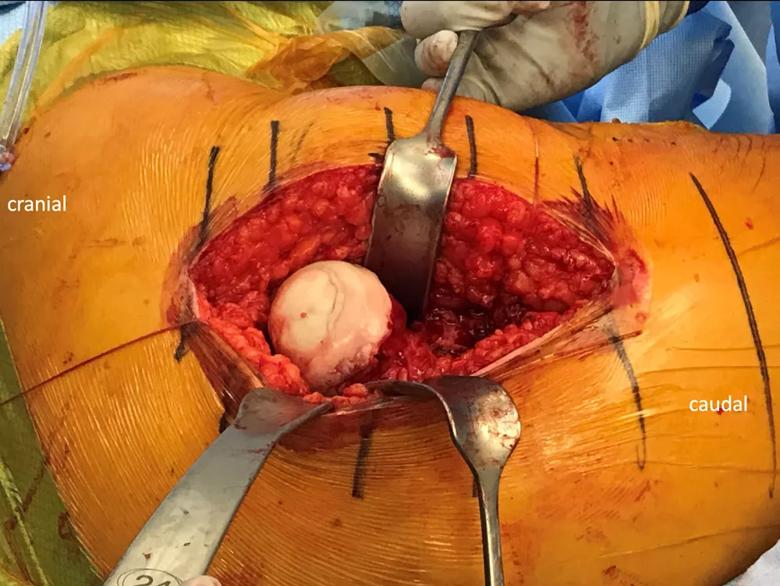
Figure 2. Intraoperative image of the exposed femoral head through the surgical dislocation approach to the hip. The large area of avascular necrosis with depression of the articular surface is seen.
Upon examination of the cartilage surfaces in the femoral head, the patient had a 35 mm in diameter AVN lesion with slight depression. Arthrosis changes in the area of impingement were seen in the anterolateral femoral head-neck junction, with a large cleft at head-neck junction at the site of maximal femoroacetabular impingement. Other cartilage areas were satisfactory.
We proceeded to excise the femoral head AVN lesion with reamers and curettes and transitioned to the allograft transfer (Figure 3). A microfracture was performed at the recipient femoral head bed, and demineralized bone matrix putty was applied, followed by the donor allograft plug. The graft was successfully placed without any significant step-offs. We reshaped the femoral head/neck junction accordingly for any residual areas of femoroacetabular impingement. Using a combination of osteotomes and a burr, the gentle waist of the femoral head and neck junction was reconstituted.

Figure 3. Intraoperative image demonstrating the osteochondral allograft transplantation technique. The recipient site (A) is measured, and the graft size is matched to a fresh allograft donor femoral head (B). The recipient site is prepared to health native femoral head subchondral tissue (C), and the allograft is press-fit into the recipient site (D).
The patient tolerated the procedure well. At the time of her postoperative follow-up appointment, the incision was well-healed and she reported improved pain and flexibility. At greater than eight months postoperatively, radiographs showed a stable appearance of the osteotomy and hardware (Figure 4), with the overall preserved architecture of the femoral head and cartilage grafting (Figure 5).
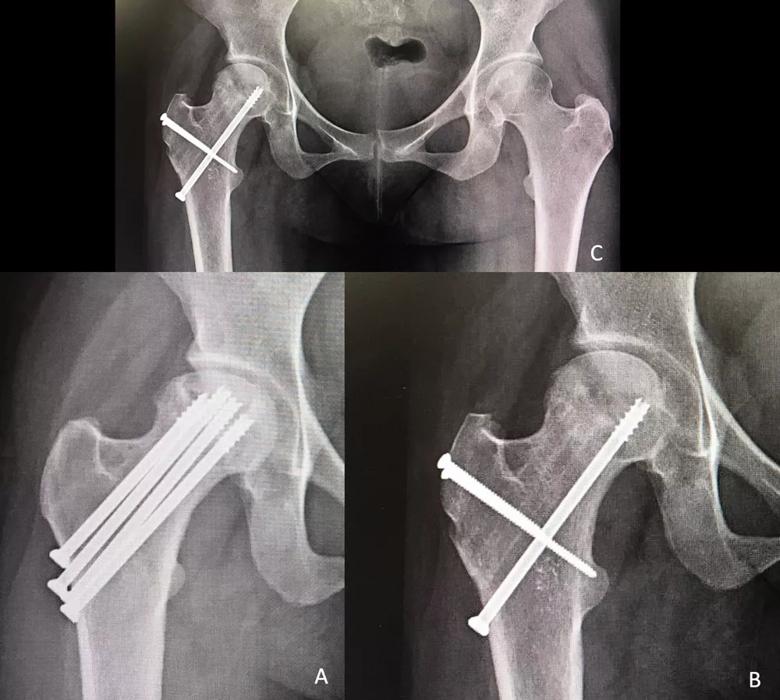
Figure 4. Preoperative (A) and post-operative (B) anteroposterior views of the right hip, as well as post-operative anteroposterior pelvis view (C) demonstrating satisfactory osteochondral allografting and healed trochanteric fixation after surgical hip dislocation.

Figure 5. Preoperative (A) and postoperative (B) anteroposterior views of the right hip depicting restoration of femoral head architecture after femoral head cartilage repair (osteochondral allograft transplantation) technique.
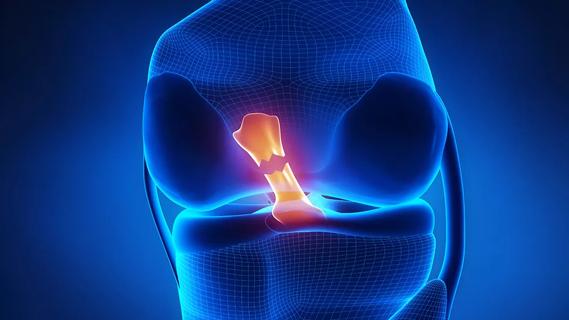
Study reports zero infections in nearly 300 patients
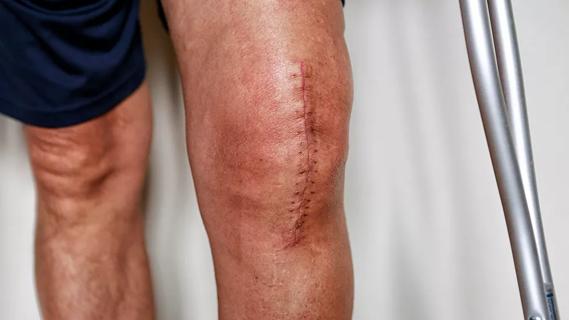
How to diagnose and treat crystalline arthropathy after knee replacement
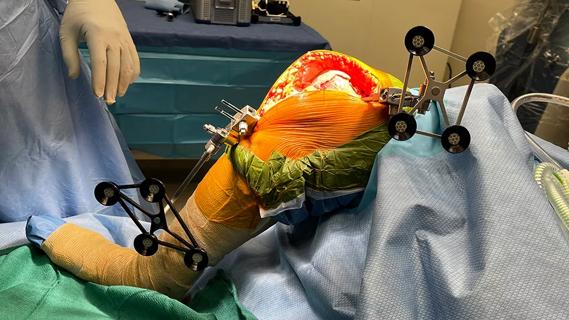
Study finds that fracture and infection are rare

Reduced narcotic use is the latest on the list of robotic surgery advantages

Cleveland Clinic orthopaedic surgeons share their best tips, most challenging cases and biggest misperceptions

How it actually compares to posterior and lateral approaches
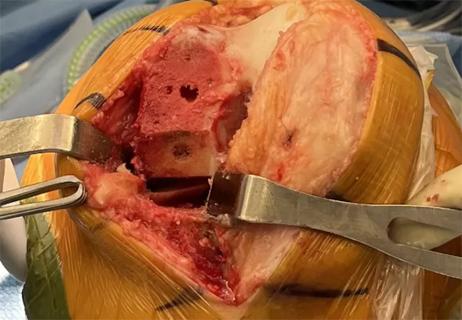
When procedure is performed by high-volume surgeons, outcomes are comparable to total knee replacement
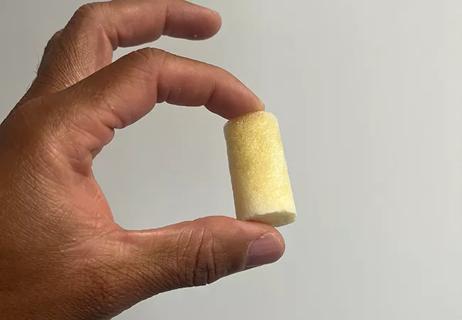
Clot substitute helps rejoin the stumps of a torn ligament